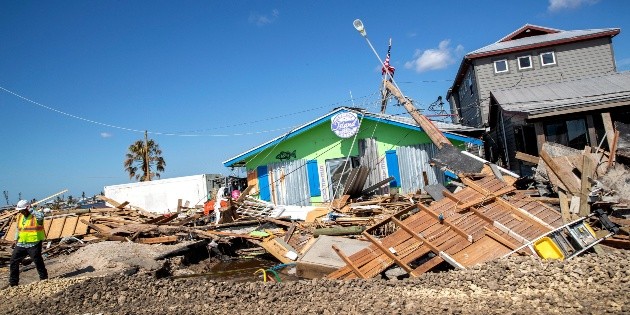Putrefying fish and garbage on the streets of Sanibel Island. On dry land, rubble from destroyed houses is piled up over a canal. Huge shrimp boats lie amid the remains of an RV camp.
“Pretend it’s a Christmas ball. Pick it up and shake it. That’s what happened.”
“Pretend it’s a Christmas ball. Pick it up and shake it. That’s what happened,” Fred Szott said.
For the past three days, he and his wife Joyce have been traveling to their destroyed Fort Myers mobile home to clean up after Hurricane “Ian” hit Florida’s west coast.
As for emotional turbulence, “You hold on, or you lose.”
The storm-related death toll rose to at least 101 in the eight days since the cyclone made landfall in southwest Florida, where 92 deaths have been registered, according to reports from the state Medical Examiners Commission. In addition, five deaths have been reported in North Carolina, three in Cuba and one in Virginia.
“Ian” is the second deadliest storm to hit the continental United States so far this century, behind only Hurricane “Katrina,” which claimed about 1,800 lives in 2005. The deadliest hurricane to reach US shores was the great Galveston hurricane of 1900, which caused around eight thousand deaths.
Just offshore, residents of Florida’s devastated barrier islands are also returning to assess the damage to their homes and businesses, even though access remains limited in some areas. Pamela Brislin came by boat to see what she could rescue herself.
Brislin stayed home through the hurricane, but what happened afterward haunts him. When he went to check on her neighbor, he found her crying. Her husband had died and his body was left lying on a garden table until help could arrive. LAnother neighbor’s house caught fire. The flames were so great that they forced Breslin to do what the hurricane couldn’t: flee with her husband and a neighbor’s dog.
“Ian”, a category 4 storm with sustained winds of 240 km / h, it unleashed torrential rains and caused extensive flooding and damage. The deluge turned the streets into rivers. Canals overflowed into neighborhoods, at some points by more than 12 feet, sending boats spilling onto patios and driveways. The beaches disappeared and the swells moved the coast inland.
Authorities estimate that the storm caused billions of dollars in damage.

